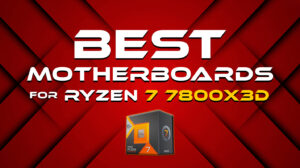13 Best Motherboards for Gaming 2025: Future-Proof Your PC
Eneba Hub contains affiliate links, which means we may earn a small commission if you make a purchase through them—at no extra cost to you. Learn more
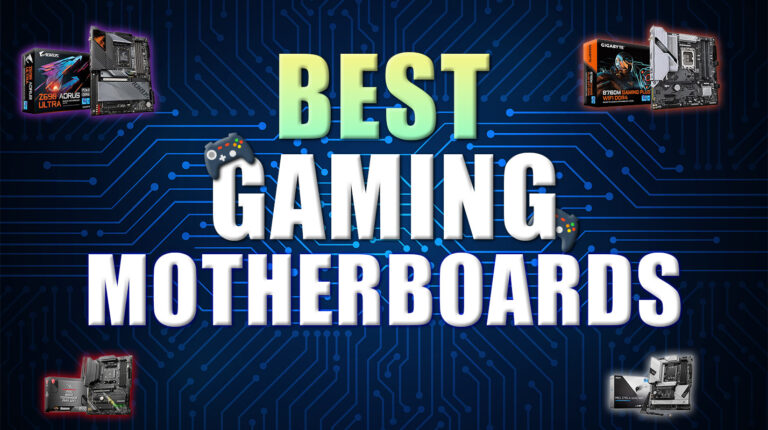
Here are the best motherboards for gaming that I’ve curated after conducting hours of market research, gathering feedback from thousands of users, and consulting reviews from industry professionals.
As someone who frequently keeps up with all the latest gaming-related tech, I know choosing a good, up-to-date motherboard for your PC is key to any build, as this will ensure compatibility with several generations of components, saving you the hassle of disassembling your setup when you eventually decide to upgrade in the future.
Every board you’ll see below is a fantastic, future-proof option for either AMD or Intel gaming PCs, offering seamless compatibility with multiple latest series/gen processors, ultra-fast PCIe and DDR speeds, outstanding expandability, and tons of connectivity options.
Naturally, all motherboards on this list also feature numerous bells and whistles that make them ideal for gaming rigs, specifically including specialized ARGB support (gotta have that extra FPS), effective VRM cooling, top-notch audio components, robust power delivery, and superb overclocking capabilities.
Let’s find the perfect motherboard for you to build around, shall we?
Jump to:
Our Top Picks for Gaming Motherboards
Want only the best among the best mobos for your rig? Here are our team’s top picks for gaming motherboards that’ll be perfect for AMD or Intel builds:
- ASUS TUF GAMING B650-PLUS – an all-around great value board with DDR5 and PCIe 5.0 support, and is compatible with AMD’s high-end 7000, 8000, and 9000 series processors.
- GIGABYTE B760M Gaming Plus – a very attractive must-buy for gamers on a budget, featuring a cost-effective mATX build compatible with Intel’s 12th-14th Gen, non-K CPUs, and great gaming performance without overclocking.
- GIGABYTE Z690 AORUS ULTRA – great for high-performance setups with 12th-14th Gen Intel CPUs, featuring overclock support, streamlined thermal design, seamless power delivery, and plenty of PCIe 5.0 and 4.0 expansion slots.
- ASUS ROG Strix X870-A – the go-to board for ultra-high-end AMD rigs, thanks to its powerful latest-gen AMD X870 chipset, capable of AI overclocking, AI cooling II, AI networking, and AEMP.
- MSI PRO Z790-A MAX WiFi ProSeries – comes with Intel’s previous-gen Z790 chipset and is a very solid choice if you want seamless overclocking for 13th and 14th Gen Intel processors.
Now, how about scrolling further down and checking out seven more motherboards I’ve prepared that have similarly fantastic, gaming-optimized specs?
13 Best Gaming Motherboards for High-Performance PC Builds
Listed below are the absolute best gaming motherboards you can get your hands on right now, with each board offering seamless compatibility with all the latest AMD and Intel processors, lightning-fast transfer speeds, plenty of upgrade slots, and – more importantly – fantastic value for your money.
Let’s look at all of these essential gaming PC elements in more detail.
1. ASUS TUF GAMING B650-PLUS [Best Overall Gaming Motherboard]

| Specs | Details |
|---|---|
| Form Factor | ATX, mATX |
| Chipset | AMD B650 |
| CPU Socket Compatibility | AMD Socket AM5 (AMD Ryzen 9000, 8000, and 7000) |
| Supported Speeds | DDR5, PCIe 5.0, PCIe 4.0 |
| RAM Slots | x4 DDR5 DIMM Slots (up to 128GB) |
| Expansion Slots | x1 M.2 PCIe 5.0 x4 x2 M.2 PCIe 4.0 x4x4 6GB/s SATAx1 PCIe 4.0 x16 (GPU) |
| Connectivity | WiFi 6, Bluetooth 5.2, Realtek 2.5 GB Ethernet, TUF LANGuard, USB 3.2 Gen 2×2, USB 3.2 Gen 2, USB 2.0 |
| RGB? | Yes (Built-in RGB, Aura Sync Support) |
ASUS TUF GAMING B650-PLUS has excellent value, coming in with DDR5 RAM slots, PCIe 5.0 lane support for M.2 SSDs, and four SATA ports – all at a reasonable price.
My research suggests that it’s also one of the more resilient motherboards out there (TUF-brand mobos are just tough to beat in that regard), so longevity and VRM design definitely won’t be an issue with this one.
It’s the “sweet spot” motherboard for most gamers unless you want to go for a hyper-specialized, higher-end build or a motherboard with PCIe 5.0 x16 support for the GPU main slot.
| Pros | Cons |
|---|---|
| ✅ Excellent price-to-performance ✅ User-friendly UEFI BIOS interface for easy overclocking and manual tweaks ✅ Amazing build quality ✅ TUF LANguard offers fantastic protection against static discharge and lightning strikes ✅ DDR5, PCIe 5.0, and USB 3.3 Gen 2×2 support ✅ Great VRM optimization | ❌ Some users have reported slower boot times after certain BIOS tweaks or a fresh install, but the issue goes away over time or by toggling Memory Context Restore |
Final Verdict: The ASUS TUF GAMING B650-PLUS is my number one recommendation for those who want the perfect balance between price and performance. Suppose you’re looking for a great motherboard for Ryzen 7 7800x3d or other high-end x3d CPUs, this value beast definitely won’t let you down.
2. GIGABYTE B760M Gaming Plus WiFi DDR4 [Best Budget Gaming Motherboard]
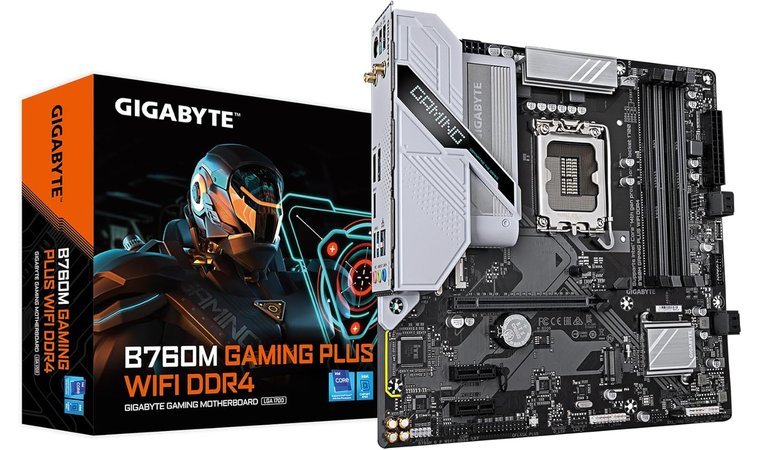
| Specs | Details |
|---|---|
| Form Factor | Micro ATX |
| Chipset | Intel B760 |
| CPU Socket Compatibility | Intel Socket LGA 1700 (Intel Core 14th, 13th, and 12th Gen) |
| Supported Speeds | DDR4, PCIe 4.0, PCIe 3.0 |
| RAM Slots | x4 DDR4 DIMM Slots (up to 128GB) |
| Expansion Slots | x2 M.2 PCIe 4.0 x4x4 6GB/s SATAx1 PCIe 4.0 x16 (GPU)x2 PCIe 3.0 x16 (GPU) |
| Connectivity | WiFi 6, Bluetooth 5.0, Realtek GbE LAN (1 Gbps), USB 3.2 Gen 1, USB 2.0/1.1 |
| RGB? | Yes (ARGB Fusion Support) |
Looking for a top budget motherboard for gaming that works really well for an Intel build? GIGABYTE B760M Gaming Plus is a feature-rich Micro ATX board that stands out even when compared to more expensive options, let alone to boards at the same price range.
It has a DDR5 version in case you want additional future-proofing for your system, but I think you’ll find this one’s DDR4 + PCIe 4.0 combo just fine, especially if you’re going for a low-cost entry-level build or even a midrange build.
| Pros | Cons |
|---|---|
| ✅ Good price point ✅ Its Smart Fan 6 makes fan speed tweaks a lot less of a hassle ✅ GIGABYTE’s Q-Flash Plus feature allows for easy BIOS updates even without a CPU ✅ Can go up to 5333MHz in RAM speed via DDR4 XMP ✅ Comes with the PCIe EZ-Latch feature ✅ Minimal throttling for high-end Intel CPUs | ❌ Lacks DDR5 and PCIe 5.0 support, but DDR4 and PCIe 4.0 speeds are more than enough even for the most demanding games at this time |
Final Verdict: It may be cheap, but GIGABYTE B760M Gaming Plus WiFi doesn’t skimp on its MSI-exclusive features, power efficiency, and board quality. This is the board to buy if you’re looking to reallocate as much of your budget to your CPU and GPU.
3. GIGABYTE Z690 AORUS ULTRA [Best Intel Z690 Motherboard]

| Specs | Details |
|---|---|
| Form Factor | ATX |
| Chipset | Intel Z690 |
| CPU Socket Compatibility | Intel Socket LGA 1700 (Intel Core 14th, 13th, and 12th Gen) |
| Supported Speeds | DDR5, PCIe 5.0, PCIe 4.0, PCIe 3.0 |
| RAM Slots | x4 DDR5 DIMM Slots (up to 192GB) |
| Expansion Slots | x4 M.2 PCIe 4.0 x4x6 SATA 6Gb/sx1 PCIe 5.0 x16 (GPU)x2 PCIe 3.0 x16 (GPU) |
| Connectivity | Wi-Fi 6, Realtek 2.5GB LAN, Bluetooth 5.2, USB 3.2 Gen 2×2, USB 3.2 Gen 2, USB 3.2 Gen 1, USB 2.0/1.1 |
| RGB? | Yes (Built-in RGB, RGB Fusion 2.0 Support) |
Now that we’ve covered a fantastic budget motherboard, how about a more expensive GIGABYTE board, with all the storage options and premium features you’ll ever need? Enter GIGABYTE Z690 AORUS ULTRA – a powerful ATX motherboard made for 12th and 13th gen processors.
It rocks a whopping four M.2 slots and six SATA slots, not to mention lots of back and front panel ports for all your peripheral needs. It’s practically begging to be overclocked, too, with its hefty 16+1+2 VRM Phase and supertuned thermal design.
| Pros | Cons |
|---|---|
| ✅ Comes with GIGABYTE’s Q-Flash Plus and EZ Latch ✅ Excellent cooling ✅ Its 16+1+2 twin hybrid VRM design and 105A power stages supports intensive overclocking ✅ Great aesthetics ✅ Has many USB ports for you to connect to ✅ Ridiculously expansive – has four M.2 slots and six SATA ports | ❌ It’s costlier than other great-value boards, but its expansiveness alone makes it a worthy buy for those who prefer having plenty of fast M.2 NVMe SSD slots |
Final Verdict: I highly recommend GIGABYTE Z690 AORUS ULTRA if you want to upgrade your motherboard but keep your 12th or 13th gen CPU. With this board, you can easily maximize your rig’s performance via intensive overclocking and have plenty of storage for your media files and games.
4. ASUS ROG Strix X870-A Gaming WiFi [Best AMD X870 Motherboard]
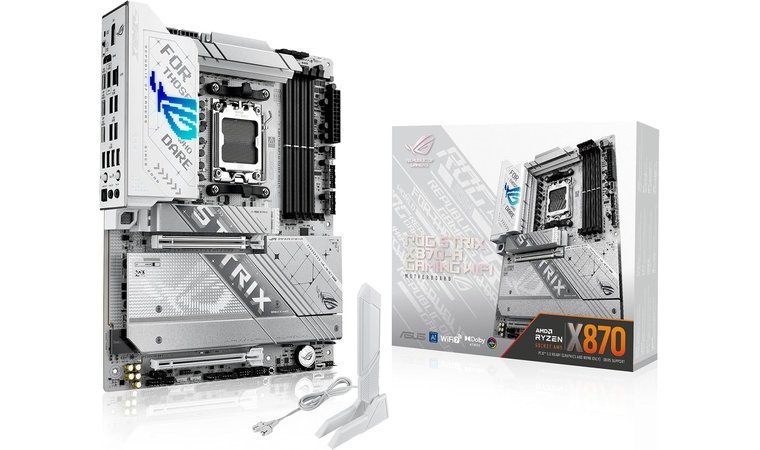
| Specs | Details |
|---|---|
| Form Factor | ATX |
| Chipset | AMD X870 |
| CPU Socket Compatibility | AMD Socket AM5 (AMD Ryzen 9000, 8000, and 7000 Series Desktop Processors) |
| Supported Speeds | DDR5, PCIe 5.0, PCIe 4.0 |
| RAM Slots | x4 DDR5 DIMM Slots (up to 192GB) |
| Expansion Slots | x2 M.2 PCIe 5.0 x4x2 M.2 PCIe 4.0 x4x2 SATA 6Gb/sx1 PCIe 5.0 x16 (GPU)x1 PCIe 4.0 x16 (GPU) |
| Connectivity | WiFi 7, Intel 2.5Gb Ethernet, Bluetooth 5.4, USB4, USB 20Gbps Type-C, USB 10Gbps Type-A and Type-C, USB 5Gbps Type-A |
| RGB? | Yes (Built-in RGB, Aura Sync ARGB Support) |
On to more costly, high-end boards, I have for you the ASUS ROG Strix X870-A, which has the latest-gen AMD X870 chipset for Ryzen processors. Throughout my years as a huge Team Red supporter, this is by far one of the most streamlined and best-looking mobos for AMD CPUs I’ve ever seen.
Very few competing board manufacturers can go toe-to-toe with ASUS ROG Strix’s A-series white motherboard lineup, and this sleek, pristine motherboard certainly is proof of that. It is, without a doubt, one of the best AMD X870 motherboard models – if not the best.
| Pros | Cons |
|---|---|
| ✅ Features AMD’s latest-gen X870 chipset ✅ Gorgeous white aesthetics ✅ Fantastic future-proofing ✅ Offers user-friendly, tool-less installation features such as PCIe Slot Q-Release Slim and M.2 Q-Latch ✅ Has ASUS’ AI-driven tools for cooling, overclocking, and networking | ❌ Only has two SATA ports, but its four M.2 ports remediate this well enough |
Final Verdict: Planning a high-end, white-themed gaming PC build? ASUS ROG Strix X870-A Gaming will rock your world with its design, not to mention its WiFi 7, PCIe 5.0, USB 4, and DDR5 support – all of which are must-haves for future-proof, premium builds.
5. MSI PRO Z790-A MAX WiFi ProSeries [Best Intel ATX Z790 Motherboard]

| Specs | Details |
|---|---|
| Form Factor | ATX |
| Chipset | Intel Z790 |
| CPU Socket Compatibility | Intel Socket LGA 1700 (Intel Core 14th, 13th, and 12th Gen Processors) |
| Supported Speeds | DDR5, PCIe 5.0, PCIe 4.0, PCIe 3.0 |
| RAM Slots | x4 DDR5 DIMM Slots (up to 192GB) |
| Expansion Slots | x4 M.2 PCIe 4.0 x4x6 SATA 6Gb/sx1 PCIe 5.0 x16 (GPU)x1 PCIe 4.0 x16 (GPU) |
| Connectivity | WiFi 7, Intel 2.5Gb Ethernet, Bluetooth 5.4, USB 3.2 Gen 2×2, USB 3.2 Gen 2, USB 3.2 Gen 1, USB 2.0 |
| RGB? | Yes (ARGB Support) |
MSI PRO Z790-A MAX WiFi ProSeries, made for Intel platforms, is one of MSI’s top-tier premium options. It has all the signature MSI features like Audio Boost 5 and PCIe Steel Armor, good overclocking options, more USB ports than you probably need, and LOTS of M.2 slots and SATA ports.
ProSeries motherboards are known to excel in both gaming and productivity, which is why it didn’t surprise me at all when this turned out as one of the best boards for creative professionals during my research as well.
| Pros | Cons |
|---|---|
| ✅ ProSeries boards are optimized for both gamers and creative professionals ✅ Offers easy troubleshooting and BIOS management for most users ✅ Four M.2 and six SATA slots will give you all the storage you need ✅ Heat-resistant MOSFET thermal pads and M.2 Shield Frozr heatsinks ✅ Comes with high-end features like WiFi 7, DDR5, PCIe 5.0 | ❌ Native USB4 support would’ve been nice to have, but its USB 3.2 Gen 2 in addition to WiFi7, DDR5, and PCIe 5.0 support makes this less of an issue |
Final Verdict: MSI PRO Z790-A MAX WiFi ProSeries is a great buy if you handle large amounts of data for content creation, in addition to gaming.
6. ASUS PRIME Z890-P WIFI [Best Intel Z890 Motherboard]
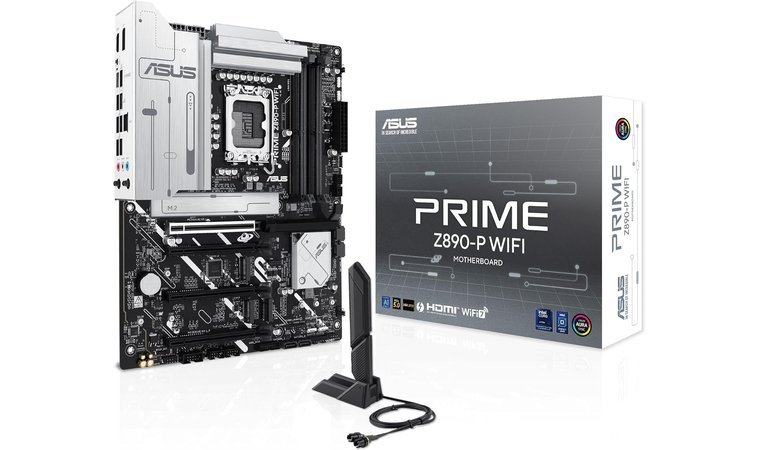
| Specs | Details |
|---|---|
| Form Factor | ATX |
| Chipset | Intel Z890 |
| CPU Socket Compatibility | Intel Socket LGA 1851 (Intel Core Ultra Processors, Series 2) |
| Supported Speeds | DDR5, PCIe 5.0, PCIe 4.0 |
| RAM Slots | x4 DDR5 DIMM Slots (up to 192GB) |
| Expansion Slots | x1 M.2 PCIe 5.0 x4x3 M.2 PCIe 4.0 x4x4 SATA 6Gb/sx1 PCIe 5.0 x16 (GPU)x1 PCIe 4.0 x16 (GPU) |
| Connectivity | WiFi 7, Bluetooth 5.4, Realtek 2.5Gb Ethernet, USB4, USB 20Gbps Type-C, USB 10Gbps Type-A and Type-C, USB 5Gbps Type-A, USB 2.0 |
| RGB? | Yes (Built-in RGB, Aura Sync Support) |
Since we’ve already breached the topic of expensive motherboards that support next-gen, high-end CPUs, this list can’t be complete without ASUS PRIME Z890-P WIFI, which is currently the best Intel Z890 motherboard for Intel Core Ultra and Series 2 CPUs you can get.
It’s the most up-to-date, future-proof motherboard on this list, along with the ASUS ROG Strix X870-A Gaming WiFi, which is its AMD-based rival.
| Pros | Cons |
|---|---|
| ✅ Features Intel’s latest-gen Z890 chipset ✅ A high-end board with WiFi 7, DDR5, PCIe 5.0, and Thunderbolt 4 ✅ Supports all current-gen processors, as well as the upcoming Arrow Lake lineup ✅ Its six-layer PCB design is durable and optimized for overclocking ✅ ASUS-exclusive AI features | ❌ Some users have reported compatibility issues with older components, but this is usually the case for new-gen mobos and is likely to be resolved via firmware updates |
Final Verdict: The ASUS PRIME Z890-P WIFI should be, at the very least, within the top three of go-to mobos if you’re building a high-performance, “money-is-no-issue” Intel-based gaming PC.
7. MSI MAG B850 TOMAHAWK MAX [Best AMD B850 Motherboard]
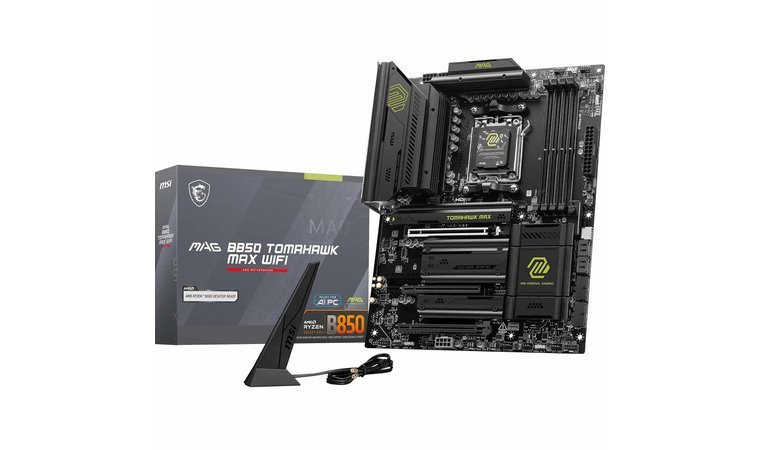
| Specs | Details |
|---|---|
| Form Factor | ATX |
| Chipset | AMD B850 |
| CPU Socket Compatibility | AMD Socket AM5 (AMD Ryzen 9000, 8000, and 7000 Series Desktop Processors) |
| Supported Speeds | DDR5, PCIe 5.0, PCIe 4.0, PCIe 3.0 |
| RAM Slots | x4 DDR5 DIMM Slots (up to 256GB) |
| Expansion Slots | x2 M.2 PCIe 5.0 x4x1 M.2 PCIe 4.0 x4x1 M.2 PCIe 4.0 x2x4 SATA 6Gb/sx1 PCIe 5.0 x16 (GPU)x1 PCIe 4.0 x16 (GPU)x1 PCIe 3.0 x16 (GPU) |
| Connectivity | WiFi 7, Realtek 5GbE Ethernet, Bluetooth 5.4, USB 20 Gbps Type-C, USB 10 Gbps Type-A and Type-C, USB 5 Gbps Type-A, USB 2.0 |
| RGB? | Yes (ARGB Support) |
MSI MAG B850 TOMAHAWK MAX continues the trend of Tomahawk-series MSI boards being absolute bangers. It offers incredible value and tons of great features, even when compared to more expensive motherboards.
The cherry on top, I think, is MSI MAG’s refined cooling solutions and power-efficient VRM. It is, without a doubt, among the most overclock-friendly high-end motherboards out there.
| Pros | Cons |
|---|---|
| ✅ Good value-per-cost ✅ Lots of next-gen features ✅ Efficient cooling ✅ Equipped with a formidable 14+2+1 power phase design with 80A Smart Power stages ✅ User-friendly EZ Debug LED, EZ PCIe Release, and EZ M.2 Shield Frozr II | ❌ No native USB4 support, but again, its USB 3.2 Gen 2 ports combined with other next-gen features make up for the loss |
Final Verdict: The MSI MAG B850 TOMAHAWK MAX is a very well-balanced motherboard for AMD gaming builds, offering a variety of premium-level features at a fairly competitive price tag.
8. GIGABYTE Ultra Durable X670 [Best AMD X670 Motherboard]

| Specs | Details |
|---|---|
| Form Factor | ATX |
| Chipset | AMD X670 |
| CPU Socket Compatibility | AMD Socket AM5 (AMD Ryzen 9000, 8000, and 7000 Series Desktop Processors) |
| Supported Speeds | DDR5, PCIe 5.0, PCIe 4.0, PCIe 3.0 |
| RAM Slots | x4 DDR5 DIMM Slots (up to 256GB) |
| Expansion Slots | x1 M.2 PCIe 5.0 x4x3 M.2 PCIe 4.0 x4x4 SATA 6Gb/sx1 PCIe 4.0 x16 (GPU)x1 PCIe 3.0 x16 (GPU) |
| Connectivity | Wi-Fi 6E, Realtek 2.5Gb Ethernet, Bluetooth 5.3, USB 3.2 Gen 2×2, USB 3.2 Gen 2, USB 3.2 Gen 1, USB 2.0 |
| RGB? | Yes (ARGB Support) |
GIGABYTE Ultra Durable X670’s main selling point is its resilience, hence the “Ultra Durable”. It’s made with enhanced PCB and features great thermal solutions, giving you a board that’s undoubtedly ranked among the upper end of mobos when it comes to long-term reliability.
Of course, it wouldn’t be here if it were just tough. It supports DDR5 and a PCIe 5.0 M.2 slot as well, both of which I consider the two best high-end, next-gen features for future-proofing.
| Pros | Cons |
|---|---|
| ✅ Outstanding build quality ✅ Easy personalization with UEFI BIOS and GIGABYTE’s control center ✅ Solid price-to-performance ratio ✅ Comes with a lengthy 5-year warranty ✅ Optimized thermals | ❌ No native USB4 support, but just like for most other boards without them, you can get an add-in card for it as an easy fix |
Final Verdict: GIGABYTE is no stranger to producing great quality products with outstanding value, and the GIGABYTE Ultra Durable X670 is a testament to that. It’s about as reliable and feature-rich as boards come, and you’ll find it a fantastic purchase if you value both.
9. ASUS TUF Gaming Z790-Plus [Best Intel Z790 Motherboard]

| Specs | Details |
|---|---|
| Form Factor | ATX |
| Chipset | Intel Z790 |
| CPU Socket Compatibility | Intel Socket LGA 1700 (Intel Core 14th, 13th, and 12th Gen Processors) |
| Supported Speeds | DDR5, PCIe 5.0, PCIe 4.0, PCIe 3.0 |
| RAM Slots | x4 DDR5 DIMM Slots (up to 192GB) |
| Expansion Slots | x4 M.2 PCIe 4.0 x4x4 SATA 6Gb/sx1 PCIe 5.0 x16 (GPU)x1 PCIe 4.0 x16 (GPU)x1 PCIe 4.0 x4 (GPU)x2 PCIe 3.0 x1 |
| Connectivity | Wi-Fi 6E, Intel 2.5GB Ethernet, Bluetooth 5.3, USB 3.2 Gen 2×2, USB 3.2 Gen 2, USB 3.2 Gen 1, USB 2.0 |
| RGB? | Yes (Built-in RGB, Aura Sync Support) |
ASUS TUF Gaming Z790-Plus is yet another reliable TUF-brand motherboard I’ve included in my list. Tons of users and industry professionals laud it for its exceptional value, which I confidently agree with, based on my own experience with ASUS’ TUF models.
This board rocks DDR5 DIMM slots and a PCIe 5.0 slot for the GPU. This much future-proofing is quite impressive, I must say, considering its price tag.
| Pros | Cons |
|---|---|
| ✅ Tough and reliable – TUF products have great longevity and build quality ✅ DDR5 + PCIe 5.0 (GPU) is a solid combo for gaming ✅ RGB-enhanced black TUF Gaming aesthetics ✅ Plenty of M.2 NVME (4 slots) and SATA (4 ports) to use | ❌ No native support for USB4, but it’s still Thunderbolt-ready via Intel-certified ASUS ThunderboltEX 4 add-in cards that are sold separately |
Final Verdict: The ASUS TUF Gaming Z790-Plus has rock-solid performance, a good selection of connectivity features, and build quality. It’s a buy-worthy option for those of you looking for the best motherboard for the i9-14900k or other high-end 12th to 14th-gen CPUs at a low price range.
10. ASUS ROG Strix B650-A [Best AMD B650 Motherboard]
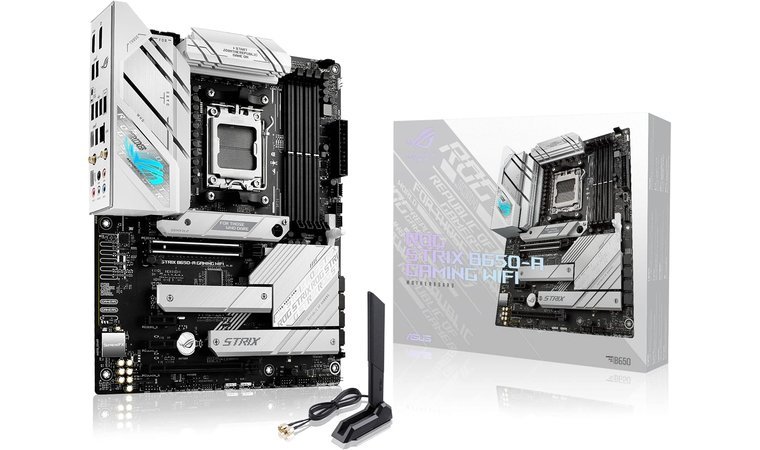
| Specs | Details |
|---|---|
| Form Factor | ATX |
| Chipset | AMD B650 |
| CPU Socket Compatibility | AMD Socket AM5 (AMD Ryzen 9000, 8000, and 7000 Series Desktop Processors) |
| Supported Speeds | DDR5, PCIe 5.0, PCIe 4.0 |
| RAM Slots | x4 DDR5 DIMM Slots (up to 192GB) |
| Expansion Slots | x1 M.2 PCIe 5.0 x4x2 M.2 PCIe 4.0 x4x4 SATA 6Gb/sx1 PCIe 4.0 x16 (GPU)x1 PCIe 4.0 x16 (GPU, x4 mode only)x1 PCIe 4.0 x1 |
| Connectivity | Wi-Fi 6E, Intel 2.5GB Ethernet, Bluetooth 5.2, USB 3.2 Gen 2×2, USB 3.2 Gen 2, USB 2.0 |
| RGB? | Yes (Built-in RGB, Aura Sync Support) |
ASUS ROG Strix B650-A’s DDR5 and M.2 PCIe 5.0 slot should give you more than enough juice to play games at the highest of configurations, provided you give it the CPU and GPU combo it deserves.
I’m a huge fan of its striking, Strix-style aesthetics as well, which is just perfect for less-common, white-themed gaming setups.
| Pros | Cons |
|---|---|
| ✅ Very affordable ✅ White ROG-themed design ✅ PCIe Q-Slot Release and M.2 Q-Latch allow for easy, tool-less component swapping ✅ Has massive VRM heatsinks and highly conductive thermal pads ✅ Impressive audio codec – ROG SupremeFX 7.1 Surround Sound High Definition Audio | ❌ No native USB4 support, but it has a Thunderbolt header in case you want to spring for an AIC |
Final Verdict: ASUS ROG Strix B650-A is a gorgeous white board that’s not just a looker – it’s also a very strong contender for systems with 7000 to 9000 CPUs that you can get without breaking the bank.
11. MSI MAG B550 Tomahawk MAX WiFi [Best AMD B550 Motherboard]
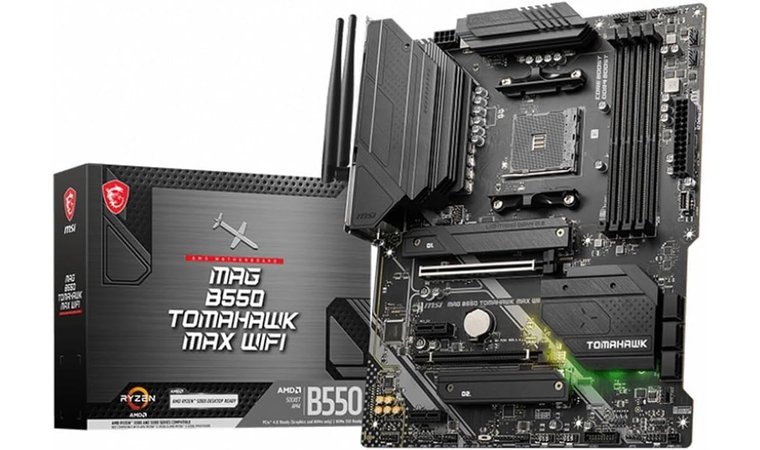
| Specs | Details |
|---|---|
| Form Factor | ATX |
| Chipset | AMD B550 |
| CPU Socket Compatibility | AMD Socket AM4 (AMD Ryzen 5000, 5000 G-Series, 4000 G-Series, and 3000 Series Processors) |
| Supported Speeds | DDR4, PCIe 4.0, PCIe 3.0 |
| RAM Slots | x4 DDR4 DIMM Slots (up to 128GB) |
| Expansion Slots | x1 M.2 PCIe 4.0 x4x1 M.2 PCIe 3.0 x4 x6 SATA 6Gb/sx1 PCIe 4.0 x16 (GPU)x1 PCIe 3.0 x 4 (GPU) |
| Connectivity | Wi-Fi 6E, Realtek 2.5GB Ethernet, Realtek 1GB Ethernet, Bluetooth 5.2, USB 3.2 Gen 2, USB 3.2 Gen 1, USB 2.0 |
| RGB? | Yes (Built-in RGB, Mystic Light ARGB support) |
MSI MAG B550 Tomahawk MAX WiFi is an excellent midrange board with sufficiently fast SSD PCIe 4.0 slots, RAM slots, and connectivity options.
Pair this budget beast up with a powerful gaming CPU and GPU combo, and you’ll be able to run any modern AAA game you want – no need for fancy schmancy DDR5 and PCIe 5.0 storage and GPU slots, as none of the latest games are majorly bottlenecked by PCIe 4.0 and DDR4 tech, anyway.
| Pros | Cons |
|---|---|
| ✅ Perfect for ultra-budget AMD builds ✅ Compatible with older (and cheaper) 3000 to 5000 series AMD CPUs ✅ Two M.2 slots and six SATA ports offer great expandability for its price ✅ Optimized thermals ✅ MAG-level durability | ❌ No DDR5, PCIe 5.0, and native USB4 support, but this much is to be expected considering how affordable it is |
Final Verdict: I’ve built a gaming system on a B550 motherboard back in 2021, and it still runs without any issue. B550 boards are just excellent for reliable budget builds, and the MSI MAG B550 Tomahawk MAX WiFi is among the best models you’ll find on the market.
12. MSI B760 Gaming Plus [Best Intel B760 Motherboard]

| Specs | Details |
|---|---|
| Form Factor | ATX |
| Chipset | Intel B760 |
| CPU Socket Compatibility | Intel Socket LGA 1700 (Intel Core 14th, 13th, and 12th Gen Processors) |
| Supported Speeds | DDR5, PCIe 4.0, PCIe 3.0 |
| RAM Slots | x4 DDR5 DIMM Slots (up to 128GB) |
| Expansion Slots | x1 M.2 PCIe 4.0 x4x1 M.2 PCIe 4.0 x4 (NVME/SATA)x4 SATA 6Gb/sx1 PCIe 4.0 x16 (GPU)x1 PCIe 4.0 x16 (GPU, x4-mode only)x1 PCIe 3.0 x1 |
| Connectivity | Wi-Fi 6E, Realtek 2.5GB Ethernet, Bluetooth 5.3, USB 3.2 Gen 2, USB 3.2 Gen 1, USB 2.0 |
| RGB? | Yes (ARGB Support) |
Not satisfied with a budget gaming build without DDR5 RAM slots? Well, MSI B760 Gaming Plus has got you covered, as this low-cost, high-value board has the DDR5 DIMMs you’ve been looking for, as well as a decent selection of expansion slots and USB ports.
MSI didn’t cheap out on the exclusive add-ons with this model, too. Despite its relatively low price, it still comes with key features like M.2 Shield Frozr and MSI Mystic Light RGB control.
| Pros | Cons |
|---|---|
| ✅ Very nice VRM cooling with an extended heatsink and MOSFET thermal pads ✅ Robust power delivery ✅ Excellent value for non-K Intel Processors ✅ Decent storage expandability ✅ DDR5 availability at this price point is fantastic | ❌ No PCIE 5.0 or native USB4 support, but again, I think the cheap price is more than enough to overlook this |
Final Verdict: MSI B760 Gaming Plus is one of the most affordable Intel-based motherboards out there. Thanks to its DDR5 support, you won’t have to worry much about future RAM-related bottlenecks with this on your budget build.
13. ASRock B660M Pro RS [Best Intel B660 Motherboard]
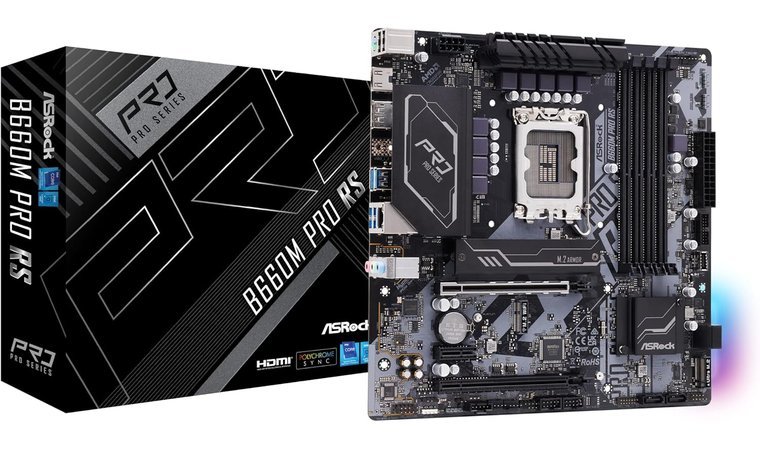
| Specs | Details |
|---|---|
| Form Factor | Micro ATX |
| Chipset | Intel B660 |
| CPU Socket Compatibility | Intel Socket LGA 1700 (Intel Core 14th, 13th & 12th Gen Processors) |
| Supported Speeds | DDR4, PCIe 4.0, PCIe 3.0 |
| RAM Slots | x4 DDR4 DIMM Slots (up to 128GB) |
| Expansion Slots | x1 M.2 PCIe 4.0 x4x1 M.2 PCIe 3.0 x4 (NVME/SATA)x4 SATA3 6.0 Gb/s Portsx1 PCIe 4.0 x16 (GPU)x1 PCIe 3.0 x16 (GPU)x1 PCIe 3.0 x1x1 M.2 Socket (Key E, for WiFi) |
| Connectivity | Intel Gigabit LAN (1 Gb/s), USB 3.2 Gen1, USB 2.0 |
| RGB? | Yes (Built-in RGB, Polychrome ARGB Sync Support) |
I consider ASRock B660M Pro RS one of the most outstanding boards you can get for Alder Lake and Raptor Lake-based gaming systems on a tight budget.
This impressive unit doesn’t just come at a way lower price tag compared to other boards on this list, but also features a respectable set of expansion slots, not to mention a stylish, RGB-enhanced build.
| Pros | Cons |
|---|---|
| ✅ A great ultra-budget option for Intel builds ✅ Pretty ASRock-themed aesthetics with built-in RGB backlighting ✅ Compact form factor with durable Sapphire Black PCB ✅ Nice flexibility on M.2 and SATA storage options | ❌ No native WiFi functionality, but it comes with an M.2 Key-E for WiFi you’ll have to install yourself |
Final Verdict: Looking for the absolute cheapest motherboard you can get away with that won’t have you sacrificing too much gaming performance? ASRock B660M Pro RS is the answer!
What To Consider When Buying a Gaming Motherboard?
Getting the right motherboard for your build is just as important as choosing the best CPU and GPU combo. Simply put, you absolutely must not skimp on your motherboard, lest you suffer performance bottlenecks and poor future-proofing.
On that note, here are all the things you need to keep in mind to get the best value for your money while shopping for motherboards:
1. Form Factor

There are four different form factors for motherboards, which typically determine their overall size and compatibility with cases:
| Motherboard Form Factors | Case Compatibility | Average Dimensions (L x W) |
|---|---|---|
| Mini ITX (mITX) | Small form factor cases | 6.7 x 6.7 in |
| Micro ATX (mATX) | mATX, midtower, and full tower cases | 9.6 x 9.6 in |
| ATX | Midtower and full tower cases | 12 x 9.6 in |
| Extended ATX (EATX) | Full tower and larger-end midtower cases | 12 x 13 in |
Pay very close attention to a motherboard’s form factor, as this will often determine the physical size of your complete build, as well as the amount and types of components it’s compatible with.
ATX and micro ATX motherboards are the most common for gaming builds as they usually feature the golden standard (4 RAM slots and 2+ storage options) combo, while EATX and mITX mobos are reserved for more “niche” builds, like ultra high-end workstations/multi-GPU gaming rigs and highly-portable mini PCs, respectively.
2. CPU Socket and Compatibility
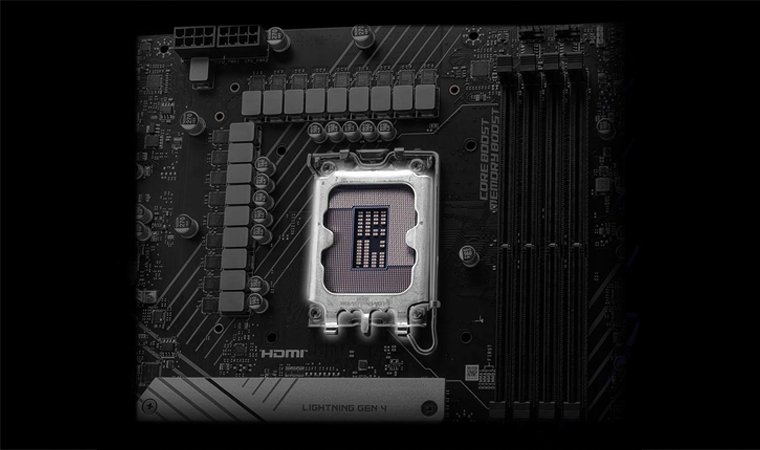
These are arguably the most important factors when choosing a motherboard for your build, as picking a mobo with a mismatched socket for your CPU will kill your build before it even gets assembled, unless you’re an absolute wizard with the soldering iron.
Luckily, there are only two things you need to take note of in this regard. Always check if the motherboard…
- …is compatible with either an AMD or an Intel processor
- …supports the specific gen/series of your preferred Intel/AMD processor
You don’t really need to learn all the socket types (AM4, AM5, LGA 1700, LGA 1851, etc.), as spec sheets for many motherboards outright state which series/gen of CPUs they’re compatible with, and whether they’re made for AMD or Intel systems.
My advice? Just pick your GPU first, the best gaming CPU your budget can handle second, then seek out the highest-end motherboard you can afford that’s compatible with both.
3. RAM Compatibility

Unless you’re actively going for a mini-PC build, getting a motherboard that has at least four RAM slots is a must for gaming rigs. This will give you better flexibility for future upgrades, as well as a higher memory capacity for a better gaming experience and overall quality of life.
| Supported RAM Types | Standard Speeds |
|---|---|
| DDR4 | 2133 to 3200 MT/s |
| DDR5 | 4000 to 6400 MT/s |
Despite what the speed measurements above suggest, both DDR4 and DDR5 RAM are excellent for gaming, with DDR5 coming off as a more premium and future-proof option.
Also, keep in mind that your RAM can be overclocked, along with your CPU and GPU. Always look for motherboards that are overclock-friendly, as this’ll allow you to elevate your components’ performance way above the standard.
4. Expansion Slots

The number and types of a motherboard’s expansion slots determine its expandability and supported bandwidth. These slots are used mainly for GPUs, storage, and Add-In Cards like network, capture, and sound cards.
These slots can be determined by their PCIe generation, which corresponds to their lane configuration and supported bandwidth:
| PCIe Generations | Bandwidth per lane | Max Bandwidth |
|---|---|---|
| PCIe 5.0 | 4 GB/s | M.2 Lanes (x4): 16GB/sGPU Lanes (x16): 64GB/s |
| PCIe 4.0 | 2 GB/s | M.2 Lanes (x4): 8GB/sGPU Lanes (x16): 32GB/s |
| PCIe 3.0 | 1 GB/s | M.2 Lanes (x4): 4GB/sGPU Lanes (x16): 16GB/s |
But what does this all mean for gaming? Well, all you have to know is that the higher the PCIe generation of a motherboard’s M.2 x4 expansion slots are, the better.
The performance jumps for PCIe 3.0, 4.0, and 5.0 x16 for GPUs are mostly negligible, but either a PCIe 4.0 x16 or 5.0 x16 slot for your GPU would be great for future-proofing. Multiple expansion slots for AICs (typically x1 lane slots) are good add-ons, but aren’t really must-haves for general use.
5. Storage Options
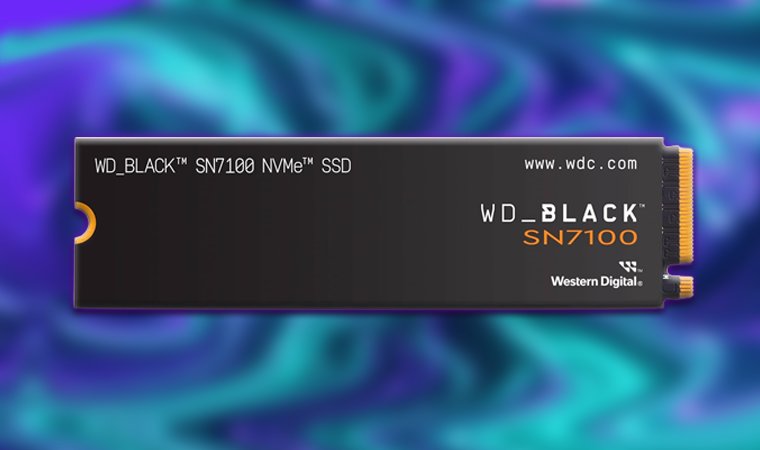
You have four storage options to consider when buying a motherboard:
| Storage Options | Compatibility | Max Transfer Speeds |
|---|---|---|
| M.2 NVMe SSDs | M.2 slot (PCIe lanes) | PCIe 3.0: ~3.5 GB/sPCIe 4.0: ~7 GB/sPCIe 5.0: ~14 GB/s |
| M.2 SATA SSDs | M.2 slot (SATA lanes) | ~600 MB/s |
| SATA SSDs | SATA port | ~600 MB/s |
| Internal HDDs | SATA port | ~200 MB/s |
I highly recommend you spring for an M.2 NVMe SSD along with a motherboard that supports them (most do nowadays).
After all, the difference between a good external SSD for gaming that uses PCIe lanes compared to even the best SATA storage units is just night and day when it comes to boot times, loading screens, and file transfers.
6. Connectivity

The absolute best connectivity features a motherboard can have, as of now, are:
- USB4/Thunderbolt 4 support
- WiFi 7
- Bluetooth 5.3
- 10 Gbps Ethernet
- HDMI 2.1b
- DisplayPort 1.4a/2.1
For a more budget-friendly gaming setup, you can get away with a motherboard that at least supports WiFi 6 and 2.5 Gbps Ethernet if you’re into competitive online titles, and at least two USB 3.2/3.1 Gen 2 ports for your peripherals.
All other features are optional, but as a general rule, their previous versions/iterations would still be great to have.
7. Future-Proofing
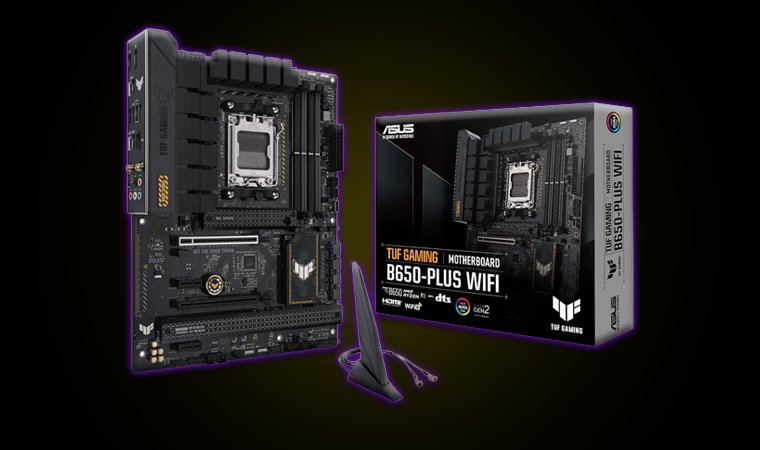
When it comes to future-proofing, buying a motherboard that supports AMD and Intel’s latest processor series/gen is ideal. At this time, these would be motherboards that support:
| Latest Gen/Series CPUs | Socket Compatibility | Supported Chipsets |
|---|---|---|
| AMD 9000 Series | AM5 | X870E, X870, X670E, X670, B850, B840, B650E, B650, A620, A620A |
| Intel Arrow Lake (Gen 15/Ultra) | LGA1851 | Z890, B860, H810 |
Of course, motherboards that are compatible with these latest-gen CPUs are typically expensive. For gaming, going down a gen/series or two would be acceptable if you’re going for a budget build, but make sure that your budget mobo at least has DDR4 RAM slots and a PCIe 4.0 M.2 NVME slot.
Lastly, get a motherboard with a PCIe 4.0 x16 or PCIe 5.0 x16 slot for your GPU. Both versions offer minimal gaming performance improvements over a PCIe 3.0 x16 slot, but they’re still nice to have just in case.
FAQs
What is the best motherboard for gaming?
The best motherboard for gaming is the ASUS TUF GAMING B650-PLUS, which is compatible with 7000 to 9000-series AMD processors and supports lightning-fast DDR5 and PCIe 5.0 speeds – all at a reasonable price. For Intel builds, the most cost-effective gaming motherboard would be the GIGABYTE B760M Gaming Plus, which is compatible with 12th Gen to 14th Gen Intel processors.
What is the best motherboard for a gaming PC?
The best motherboard for a gaming PC is the ASUS ROG Strix X870-A, as its latest-gen AMD X870 chipset supports all the high-end flagship processors for AMD systems. For Intel PCs, the ASUS PRIME Z890-P WIFI, which features the latest-gen Intel Z890 chipset, is among the most future-proof options you can get right now.
Does the motherboard matter for gaming?
Yes, the motherboard matters a lot for gaming, as it determines which components your build is compatible with, the transfer speeds it’s capable of, and the supported connectivity options of your system. Getting a good, up-to-date motherboard for your gaming PC will also improve its future-proofing, allowing you to swap out your components easily later on.
How to choose a motherboard for gaming?
To choose a motherboard for gaming, you must first pick what CPU and GPU combo you’ll be spending most of your budget on, then check which motherboards they’re compatible with, especially the CPU. Always check if a motherboard is made for either AMD or Intel processors, and what series (for AMD) or Gen (for Intel) they’re compatible with.
What is a motherboard?
The motherboard is the circuit board, often rectangular, component of a PC that acts as the central hub for all your hardware, allowing them to transfer data between each other. The motherboard comes with a CPU socket, PCIe slots for graphics cards, RAM slots, and cables that facilitate power and data transfer throughout your system.
What does a motherboard do?
The motherboard is the main component upon which all the other parts are built, and is responsible for supplying power for each of them. Additionally, your PC’s motherboard facilitates the communication between your other components, such as the RAM, CPU, GPU, and storage drives.



